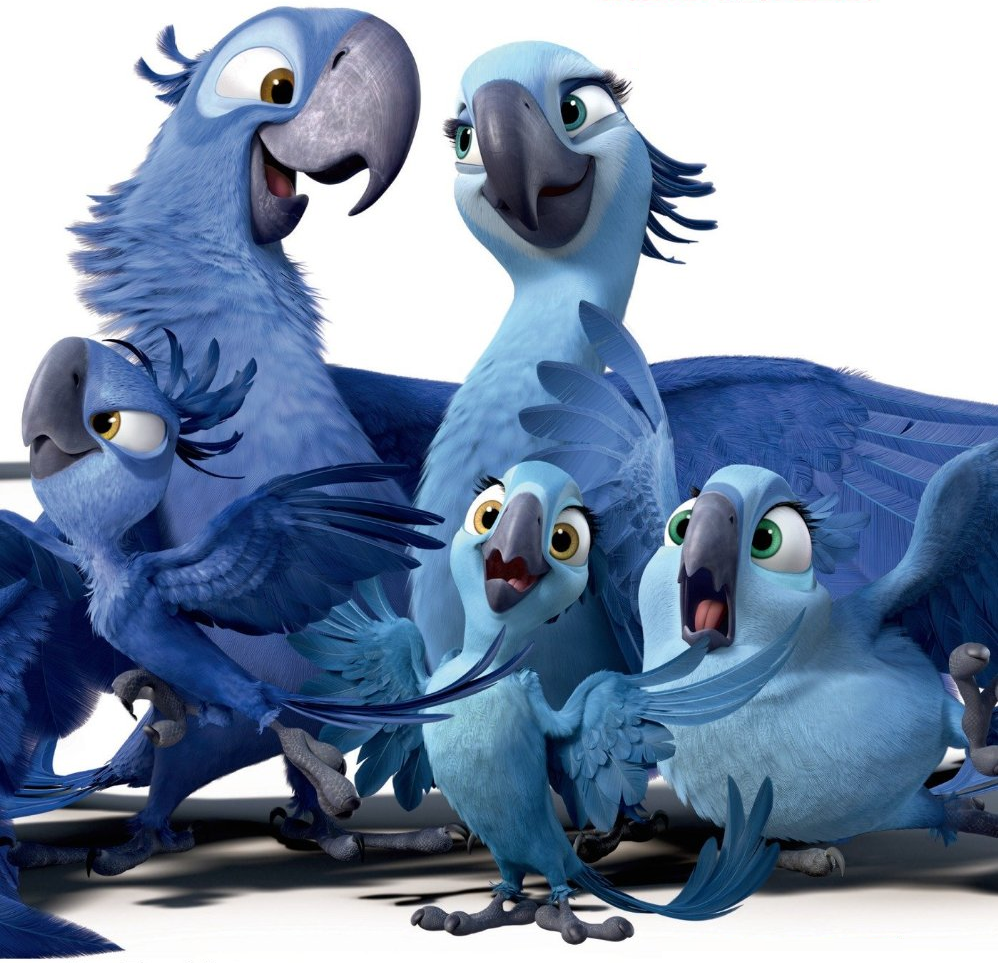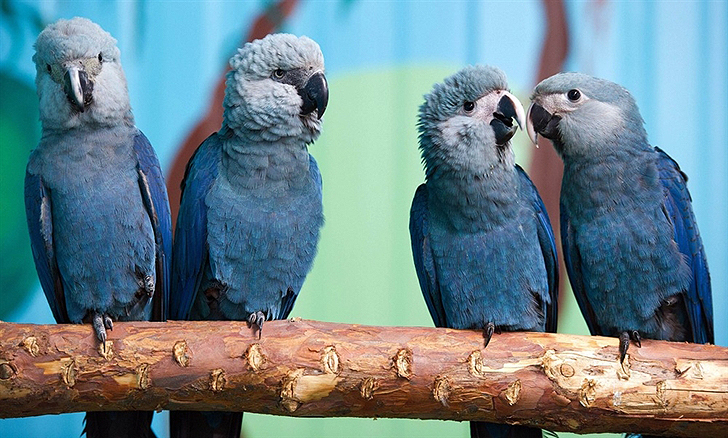It was World Parrot Day on May 31st. This is a
day that will resonate with many millions of parrots share a captive
life with humans, including me, yet not so many of these humans will in
fact know that nearly a third of all psittacine species worldwide are
classified as threatened or endangered.
 |
| One of my parrots - Charley |
 |
| Psittacines are Zygodactylie - Top Right |
Psittacines
are an order of birds that consists of more then 350 individual species
(not counting genetic morphs humans have bred for aesthetic purposes).
Species that fall under the order Psittaciformes includes Macaws,
Amazons, Lovebirds, Cockatoos, Parakeets and Lorikeets.Psittacines are
generally found in warmer areas of the world with the greatest
diversities existing in Australasia, Central America and South America,
although some species such as the Indian Ring-Necked Parakeet have made
their home in milder/colder climates such as the United Kingdom. Despite
the number of species, all parrots share a curved beak and are all what
is called zygodactyls, which means they have 4 toes on each foot, 2
pointing forward and 2 pointing backwards. Parrot species usually feed
on a mixture of seeds, fruits, flowers, buds, nuts and sometimes, small
insects.
Psittacines
have been popular companions throughout history because they are
highly intelligent, charismatic, colourful and largely vocal. Some may
even master imitating human speech, from the hilarious and cool as shown
below to the outstanding as demonstrated by the famous Alex the Parrot,
also linked below.
Parrot sings Drowning Pool - Let the Bodies hit the Floor
Americas got Talent - Echo the Amazon
Alex the Parrot. If you haven't read his story, I highly recommend it. Alex was one of the groundbreaking animals in regards to avian cognition.
Although
currently protected under the Convention on International Trade in
Endangered Species (CITES), which bans the sale of any wild caught
species, the sheer popularity of parrots as a domestic companion drives
the illegal trade far beyond any possible sustainable boundary. Besides trapping, the main threats facing many psittacine species are loss of habitat and the encroachment of humans including an vast increase in the mount of agricultural land leading to severe population displacements for a number of species.
The site mongabay.com
included the clearest diagram I could find relating to the conservation state of the
worlds psittacines along with a table comprised of IUCN's red list data
on parrot species showing the large number of species that range from
extinct to near threatened and their current population trends. Go check it out: http://rainforests.mongabay.com/endangered/charts/birds-parrots.html
 |
| Copyright: Rhett A. Butler + Mongabay |
The rest of this post will focus on one species in particular that has had my attention form nay years. A lot of conservation has been done with this species and 2 recently made animated films have helped project much more focus onto the critically endangered species.
Spix's Macaw (Cyanopsitta spixii)
 |
| Captive Macaw - East Germany - Copyright VoA, 2011 |
Spix's Macaw is one of the worlds rarest birds and was thought to be beyond saving when it was declared extinct in the wild in the year 2000 after the last male disappeared. However, the lack of conducted surveying in the Brazilian rainforest means that a true assessment can not be obtained, although any remaining undiscovered wild populations would be very small in number leading to an official classification of Critically endangered by IUCN. They are a small macaw at 55-57cm in length which and has a blue-grey plumage across its whole body. It fades from bright blue on the tail and wings to a more ashy-blue colouration on the head with a ring of featherless, dark grey skin around the eyes.
They are endemic to small area in the northeastern corner of Brazil. By 2002 there was a captive population of around 60 macaws around the world, mostly in private collections, but by 2010 this number increased to around 71 individuals. The existing captive population is
thought to have descended from just 7 wild caught founders. As of 2013
there is approximately 96 macaws in captivity, 83 of which are
participating in an international breeding programme. Other populations
are held in classified locations in order to protect them from illegal
activity.
Extinction & Conservation
 |
| RIO & RIO 2 by Dreamworks |
By the time of the macaws discovery in 1819, it was already classed as rare after 100's of years of intensive burning, logging and grazing of its habitat. Deforestation and human encroachment following the European colonisation of eastern Brazil also aided in the decline of the macaw in the 20th century. Following this, the introduction of invasive and predatory species such as the black rat, feral cat and mongoose which preyed upon the birds and their eggs. Recent evidence also suggests that the vast conversion to agricultural land and the building of hydro-electric dams in the 1970's have changed the structure of the native flora displacing the macaws from its original range. The final nail in the coffin for the macaw came in the 1970's and 1980's as hunting and trapping alongside existing deforestation threats decimated populations. The habitat the macaw lives in is also important, many of the trees in their original range are between 200-300 years old and there has been no regenerative growth in over 50 years, possibly due to climate change which may end up reducing the reclaimable habitat. The charming animated films RIO have helped raise awareness of the species amongst new generations as breeding efforts continue.
 |
| Spix's Macaw chicks (AWWP) |
Until 2001 the recovery of the Spix's Macaw was implemented through the Permanent Committee for the Recovery of the Spix's Macaw (CPRAA) composed of the Brazilian government, scientific advisers and owners who held macaw in captivity. Vital ecological and behavioural information was gained from the solitary male, including observing a successful breeding and rearing of chicks with a Blue-Winged Macaw female means that this second species could be used as a foster for captive breeding programmes in the future. However, internal disputes led the Brazilian government to suspend the CPRAA in 2001 which dealt a huge blow to efforts to reintroduce the macaw back into the wild. However, being from such a low initial captive population the macaws suffer from very low genetic heterozygosity, leading to the initial birds being inbred numerous times leaving the population facing high infertility and embryo deaths. Inbreeding is also thought to have contributed to delayed maturity in chicks and more cocks than hens being hatched. The majority of hatched chicks are hand raised by experienced staff, to reduce the risk of losing live chicks (initially 1 in 10 eggs). The Spix's Macaw also has a complicated pairing system, they choose their own mate, so getting the best genetic pairing is not always possible as some may act like a pair together but will not actually mate. However, new advancements in 2009 led to artificial insemination being successfully carried out to fertilise eggs.
Go look at Al Wabra Wildlife Preservation (AWWP) who are carrying out the leading work in Spix's Macaw conservation: https://www.facebook.com/awwp.spix
Also have a look at the World Parrot Trust website to see all of the work that they do to help parrot species worldwide: http://www.parrots.org/
Birdman.
The Birdman Chronicles creates no claim or credit for images featured on this blog unless
otherwise noted. All visual content is copyrighted to it's respectful
owners and every effort is made to link back to original content or photographer/ named
whenever possible. If you own rights to any of the images, and do not
wish them to appear here, please contact me and they will be promptly
removed.



No comments:
Post a Comment